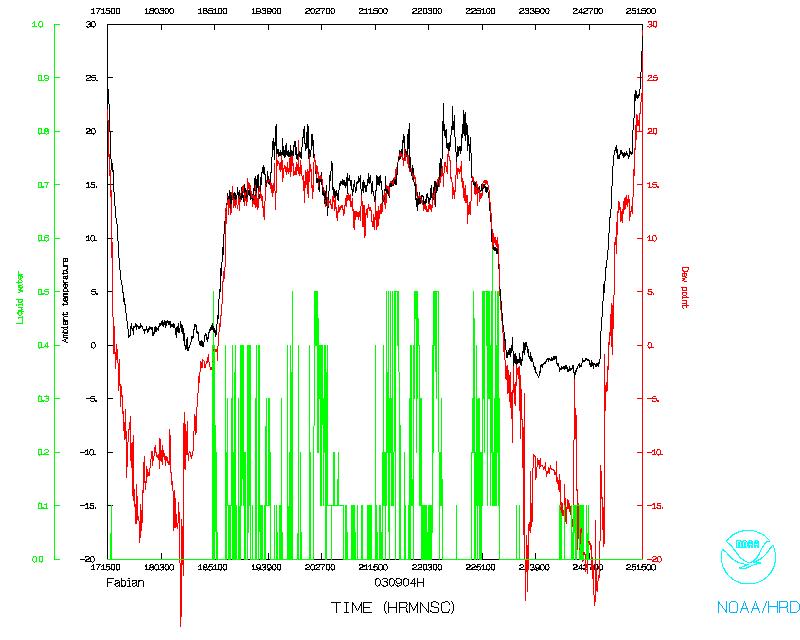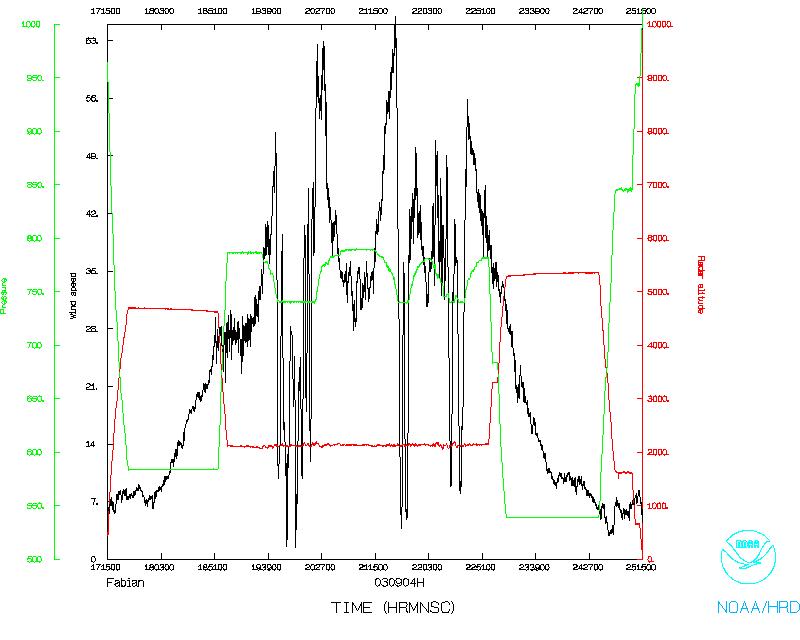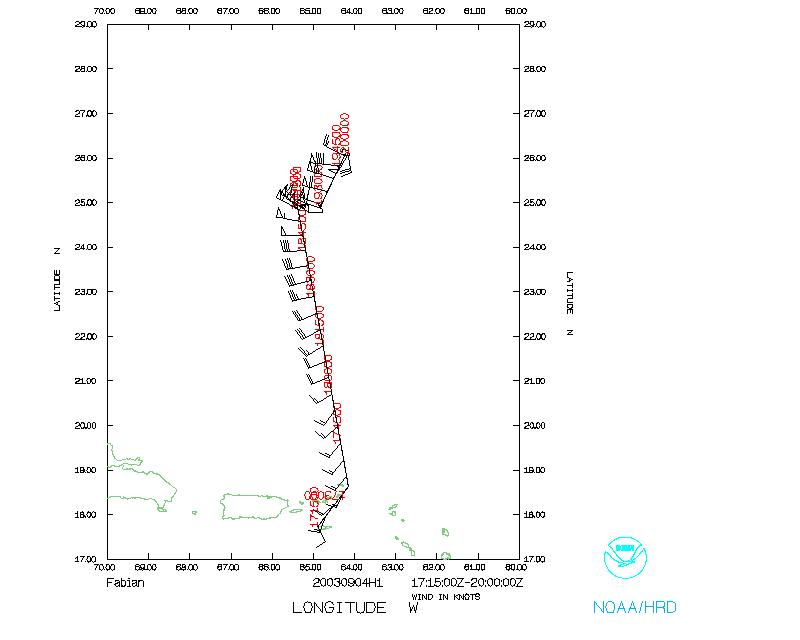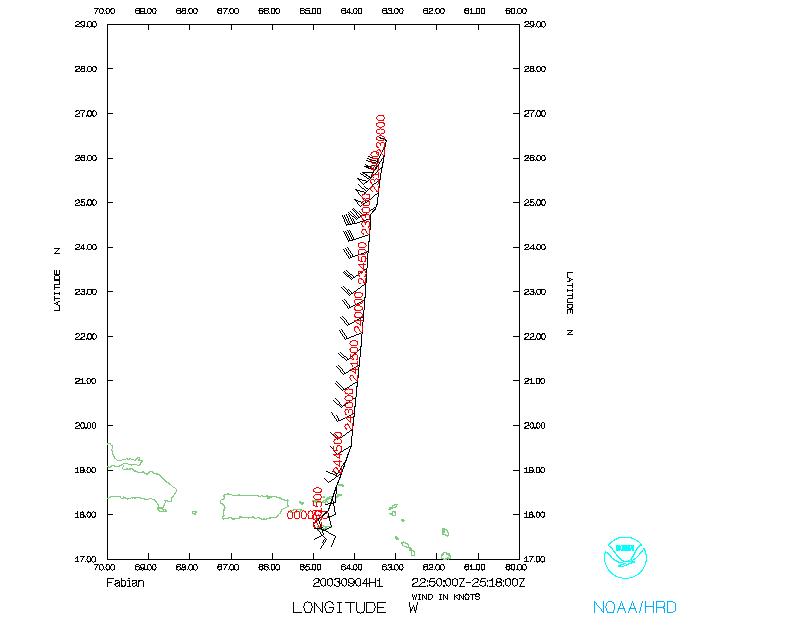Flight Data | ||
 Flight track |
 Temperature and Moisture |
 Wind and Altitude |
 Flight track start |
 Flight track end |
|
| Lead Scientist | Peter Dodge |
| Lead Scientist | Paul Chang (NESDIS) |
| Radar Scientist | Frank Marks |
| Sonde Scientist | Sim Aberson |
| CBLAST Scientist | Daniel Esteban (UMass) |
| CBLAST Scientist | Beth Kern (UMass) |
The plane will leave St. Croix at 1:00 PM AST and fly a two-plane CBLAST butterfly pattern at 12,000' and 8,000' with stepped descents in between rainbands and recover at St.Croix by 9:30 PM AST.
Mission Summary :
The plane left St. Croix at 1:00 PM AST and recovered at St.Croix by 9:15 PM AST.
We finished the CBLAST flights into Fabian today with another two aircraft flights as it moved directly over the Buoy/float array deployed last evening by the 53rd. A figure four pattern was flown by both aircraft with 3 coordinated 12 sonde GPS deployment sequences in the eyewall and one 8 sonde sequence. 95% of the sondes made it to 30 m or below. SFMR,USFMR and IWRAP functioned perfectly again wiht the SFMR measuring a max surface wind of 115 kt directly over 3 of the buoy/float locations. Four AXBT's were deployed along the Buoy/float deployment line as the eye of the storm passed over the middle of the line.
This was an incredible coincidence of the aircraft , hurricane eye and buoy/float locations all being coincident. We intend to take every advantage of this opportunity to aggressively pursue the analysis of this unique data set.
Instrumentation worked great again as the CIP worked well, as did the IRGA and LICOR, BAT probe in the stepped descents, the SRA, the Scripps MASS camera system and the sonobuoy system.
Problems :
Once again it was very difficult to fit in the stepped descent part of the pattern with rain all over the place. The BAT probe again had problems with ingesting too much water. However, a rain free area was finally located in a region of 45 kt winds in the front quadrant of the storm, which will be an excellent complement to the one flown on Tuesday in the rear of the storm- the former being in wave conditions were swell was running at right angle to the wind in local seas that were high, but not too steep. This is in contrast to the rear quadrant conditions where short, steep waves were observed.
Mission Data :
Flight Data | ||
 Flight track |
 Temperature and Moisture |
 Wind and Altitude |
 Flight track start |
 Flight track end |
|
Future Plans :
I spent almost 3 hours in a debrief with the WC-130J crew, who were ecstatic upon hearing that the buoys worked. The 53rd crew exemplified the same spirit of enthusiasm, professionalism and attention to detail that AOC's two P-3 crews have demonstrated, that HRD and CBLAST Pi's have demonstrated- something that has characterized every single group participating in this experiment- and is the prime reason for its success.
Peter G. Black
HRD Field Program Director
Return to Mission page.